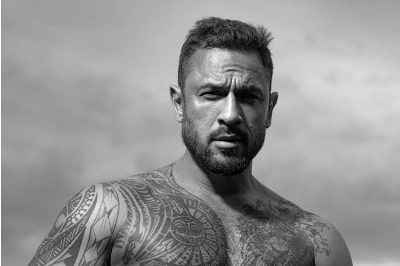Gender Roles and Masculinity in Different Cultures: Understanding the Diversity

Gender roles and masculinity have been a topic of discussion for centuries. In different cultures, the concepts of gender roles and masculinity vary considerably, and it is crucial to understand the diversity in order to appreciate and respect the variations in cultural beliefs and practices.
In this article, we will explore gender roles and masculinity in different cultures and how they shape individuals’ identities and their behavior. We will also discuss the challenges faced by individuals who do not conform to gender roles and masculinity norms, and how these issues can be addressed.
Gender Roles in Different Cultures
Gender roles are the social expectations and norms that determine how males and females should behave in a particular culture. These roles are shaped by cultural beliefs, values, and attitudes, and they define the behaviors that are considered appropriate for each gender. In many cultures, gender roles are strictly defined, and individuals who do not conform to these roles may face discrimination and social exclusion.
In some cultures, gender roles are based on biological differences, with males and females assigned specific tasks and responsibilities based on their gender. For example, in many traditional societies, men are expected to provide for their families and engage in activities that require physical strength, while women are expected to take care of the home and children.
In other cultures, gender roles are less rigid, and there is more flexibility in the behaviors and roles that are considered appropriate for each gender. For example, in Western cultures, there is a greater emphasis on individualism and personal choice, and individuals are encouraged to pursue their interests and aspirations regardless of their gender.
Masculinity in Different Cultures
Masculinity refers to the set of attributes, behaviors, and attitudes that are traditionally associated with males in a particular culture. Masculinity norms vary considerably across different cultures, and they are shaped by cultural beliefs, values, and attitudes.
In some cultures, masculinity is closely linked to physical strength, courage, and dominance, and men are expected to exhibit these traits to be considered masculine. For example, in many African cultures, masculinity is associated with hunting and warfare, and men who engage in these activities are seen as more masculine.
In other cultures, masculinity is more closely linked to intellectual and emotional traits, such as intelligence, compassion, and sensitivity. For example, in some Asian cultures, men who exhibit these traits are seen as more masculine, and they may be more highly valued than men who exhibit physical strength and dominance.
Challenges Faced by Individuals Who Do Not Conform to Gender Roles and Masculinity Norms
Individuals who do not conform to gender roles and masculinity norms may face a range of challenges, including discrimination, social exclusion, and mental health issues. In some cultures, individuals who do not conform to these norms may be seen as deviant or abnormal, and they may be ostracized by their communities.
In Western cultures, there is growing awareness of the challenges faced by individuals who do not conform to gender roles and masculinity norms, and there is a greater emphasis on diversity and inclusivity. However, even in these cultures, individuals who do not conform to these norms may still face discrimination and social exclusion.
Addressing the Issues
To address the issues faced by individuals who do not conform to gender roles and masculinity norms, it is important to promote diversity and inclusivity in all cultures. This can be done through education, awareness-raising, and advocacy, as well as through policy and legislative changes.
Educational initiatives can help to challenge gender stereotypes and promote greater understanding and acceptance of diversity. Awareness-raising campaigns can help to highlight the experiences of individuals who do not conform to gender roles and masculinity norms, and promote empathy and understanding.
Advocacy can also play a crucial role in promoting diversity and inclusivity, by raising awareness of the issues faced by individuals who do not conform to gender roles and masculinity norms, and advocating for policies and legislative changes that promote equality and diversity.
Policy and legislative changes can also be crucial in promoting diversity and inclusivity. For example, policies that promote gender equality and prohibit discrimination based on gender can help to create more inclusive societies. Similarly, legislative changes that protect the rights of individuals who do not conform to gender roles and masculinity norms can help to reduce discrimination and social exclusion.
Gender roles and masculinity are complex concepts that vary considerably across different cultures. Understanding and appreciating this diversity is crucial for promoting diversity and inclusivity, and for addressing the challenges faced by individuals who do not conform to gender roles and masculinity norms.
Through education, awareness-raising, advocacy, and policy and legislative changes, it is possible to promote greater understanding and acceptance of diversity, and to create more inclusive societies where individuals are free to pursue their interests and aspirations regardless of their gender.